
10 Nov 2019:
As of September 2019 we have a new female peregrine, Morela, with the continuing male, Terzo, at the Cathedral of Learning. Here are some guidelines for telling them apart on camera. The most reliable clues are listed first.
1. Banded versus unbanded: As shown above: Terzo is banded Black/Red N/29. Morela has no bands on her legs.
2. Face, necklace, cheeks: photos below.
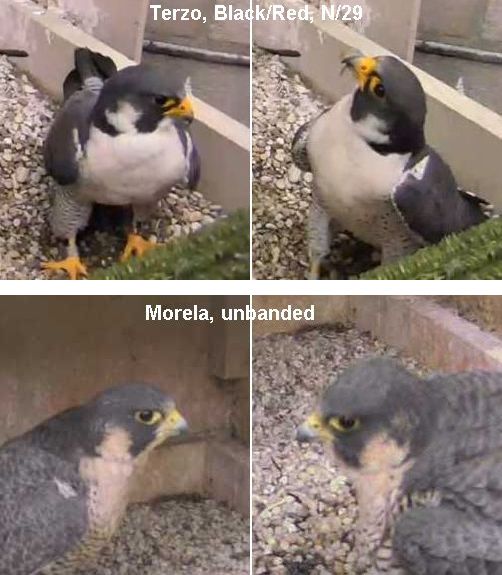
Terzo: Terzo is a bright white bird on his chest, cheeks and breast. For example: The area between Terzo’s malar stripe (moustache) and the dark gray of his nape (back of his neck) is bright white with a small black spot at the top. His “necklace” is long and narrow and almost reaches the bottom of his malar stripe. The white area framed on his left cheek is shaped like a heart.
Morela: Morela is peach-colored where Terzo is white, including her cheeks. She also has a short wide “necklace” when she turns her head, especially on her left side.
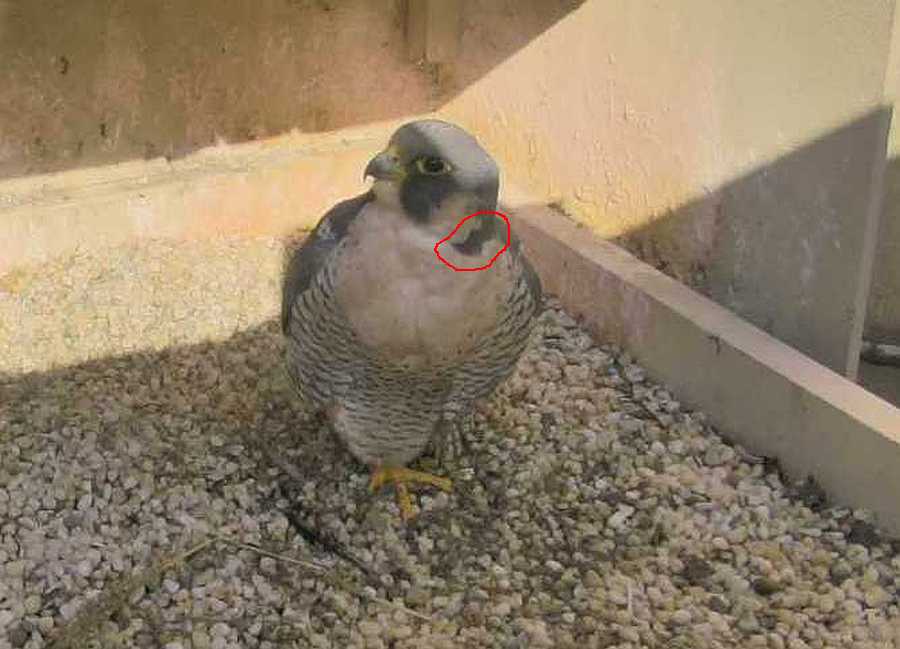
2. Breast and chest:
Even though she is unbanded, two of Morela’a features make her unique, even among female peregrines.
- Morela is peach-colored everywhere that other birds are white, including on her breast, on her chest and on her cheeks behind her malar stripe.
- Morela’s breast is clear with a just few dark dots on the edges of her bib (see photo below).
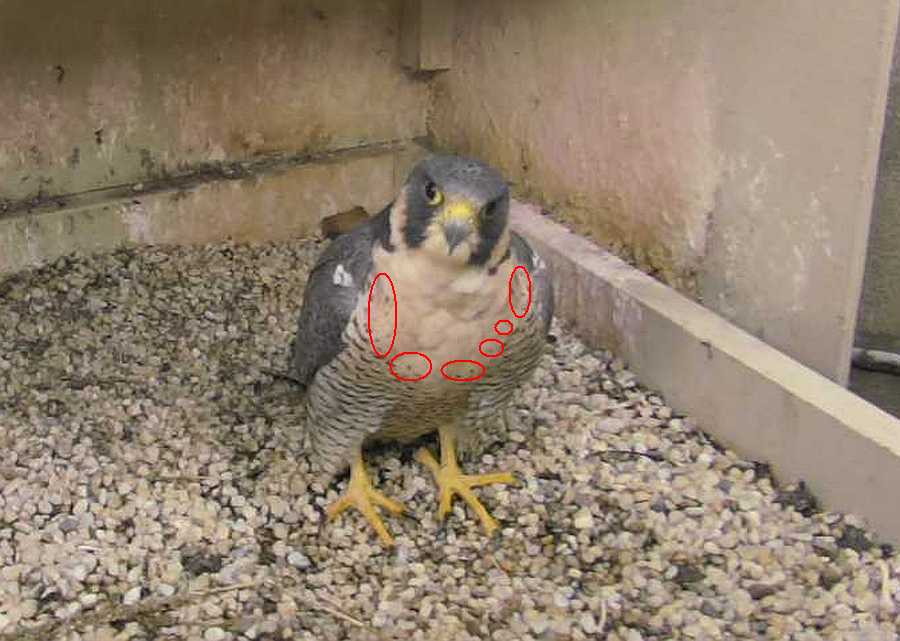
3. Plumage contrast on back: Adult male peregrines usually have paler gray backs than the females. I have seen this difference between Terzo and Morela but do not have photos yet. Look for an update in Spring 2020 after incubation begins.
Test your skills: Can you figure out who is who in these photos? Who’s at the back? Who’s in front? What clues did you use?
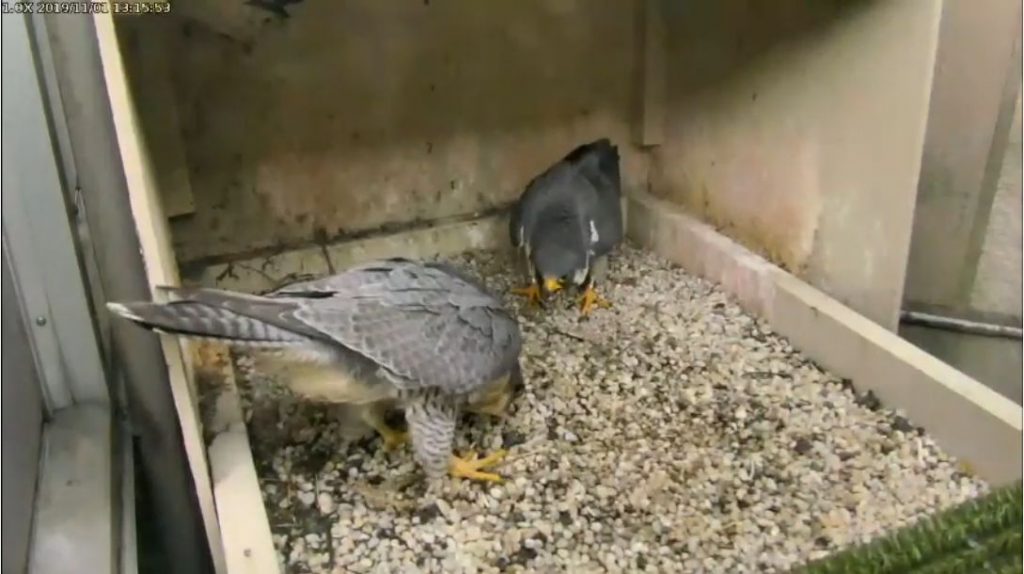
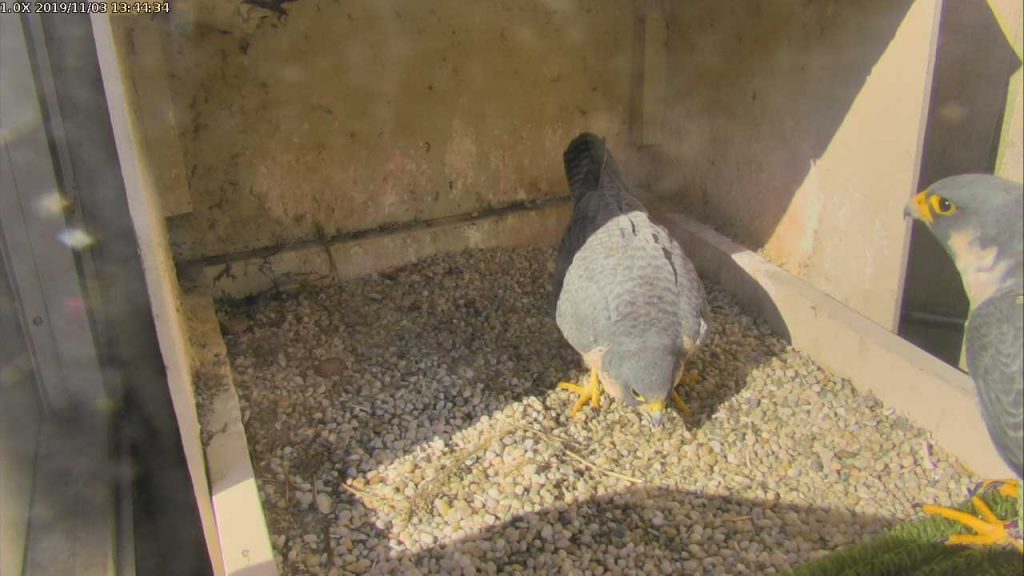
(photos from the National Aviary falconcam at Univ of Pittsburgh)